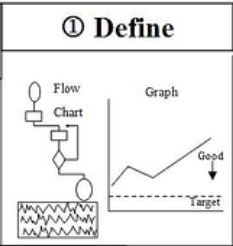 The first phase in the Six Sigma Define-Measure-Analyze-Improve-Control (DMAIC) Methodology is Define. In this Premium HD Video, we learn the key steps in the Define Phase and how to properly execute Define in a DMAIC Project.
The first phase in the Six Sigma Define-Measure-Analyze-Improve-Control (DMAIC) Methodology is Define. In this Premium HD Video, we learn the key steps in the Define Phase and how to properly execute Define in a DMAIC Project.
During the Define phase, a team and its sponsors reach agreement on what the project is and what it should accomplish.
The main work in the Define phase is for the project team to complete an analysis of what the project should accomplish and confirm understanding with the sponsor(s). They should agree on the problem, which customers are affected, and how the current process or outcomes fail to meet their customers’ needs.
The video below explains in detail the elements of Define.
Tools Used in Define
Some tools that help in this phase are the following (suggestions only, not mandatory):
- Voice of the Customer
- Affinity Diagram
- Critical-To-Quality (CTQ)
- Stakeholder Analysis
- Kano Model (Kano Analysis)
The outcome of the Define phase are typically the following:
- A clear statement of the intended improvement (Project Charter)
- A high-level map of the Processes (SIPOC)
- Current Performance of the process, typically displayed through a run chart.
- An understanding of the project’s link to corporate strategy (hoshin kanri) and its contribution to (Return on Invested Capital (ROIC)
The above is a standard template for the elements of the Define phase in Six Sigma.
[contentblock id=16 img=gcb.png]








Comments are disabled for this post.